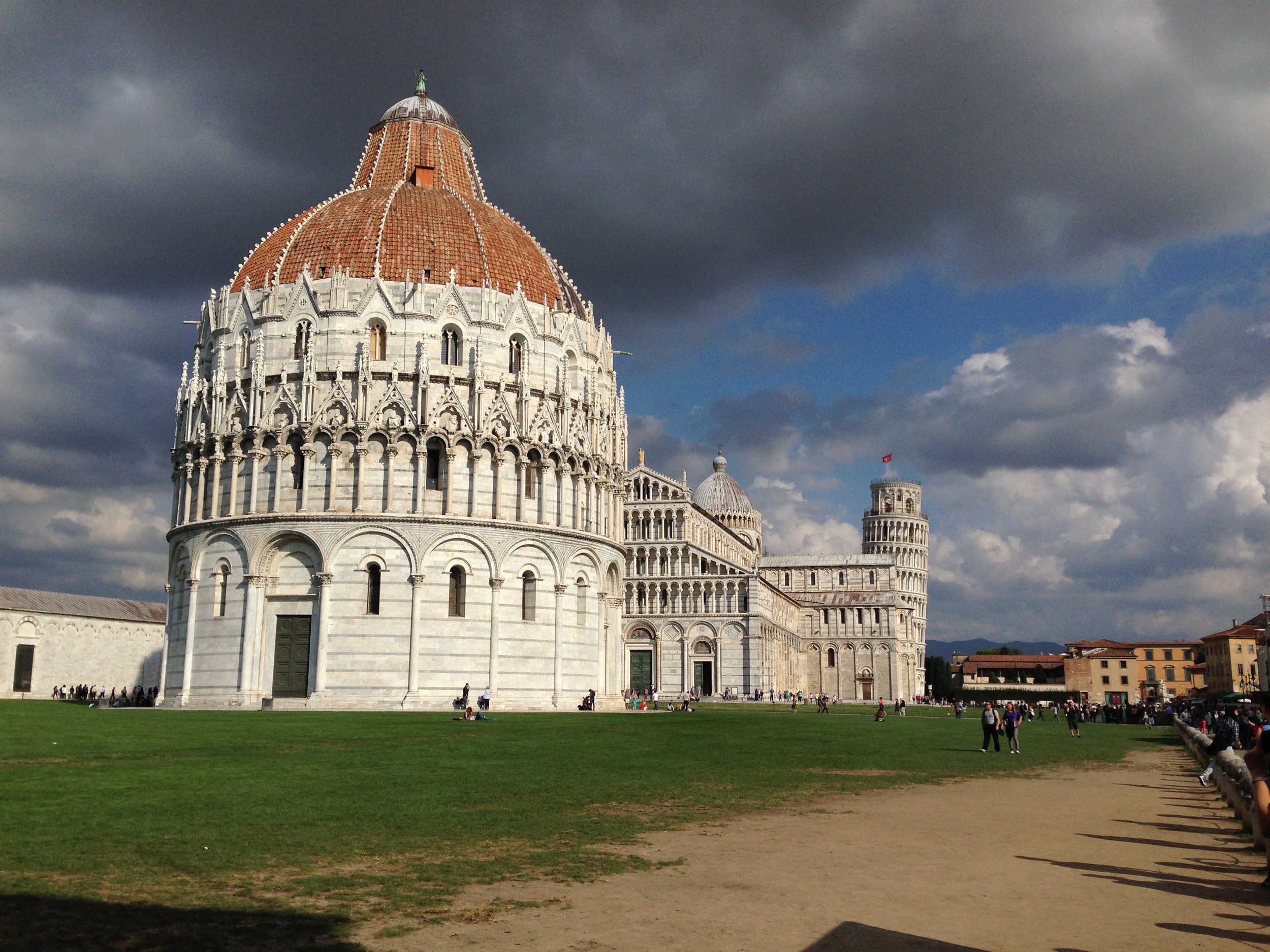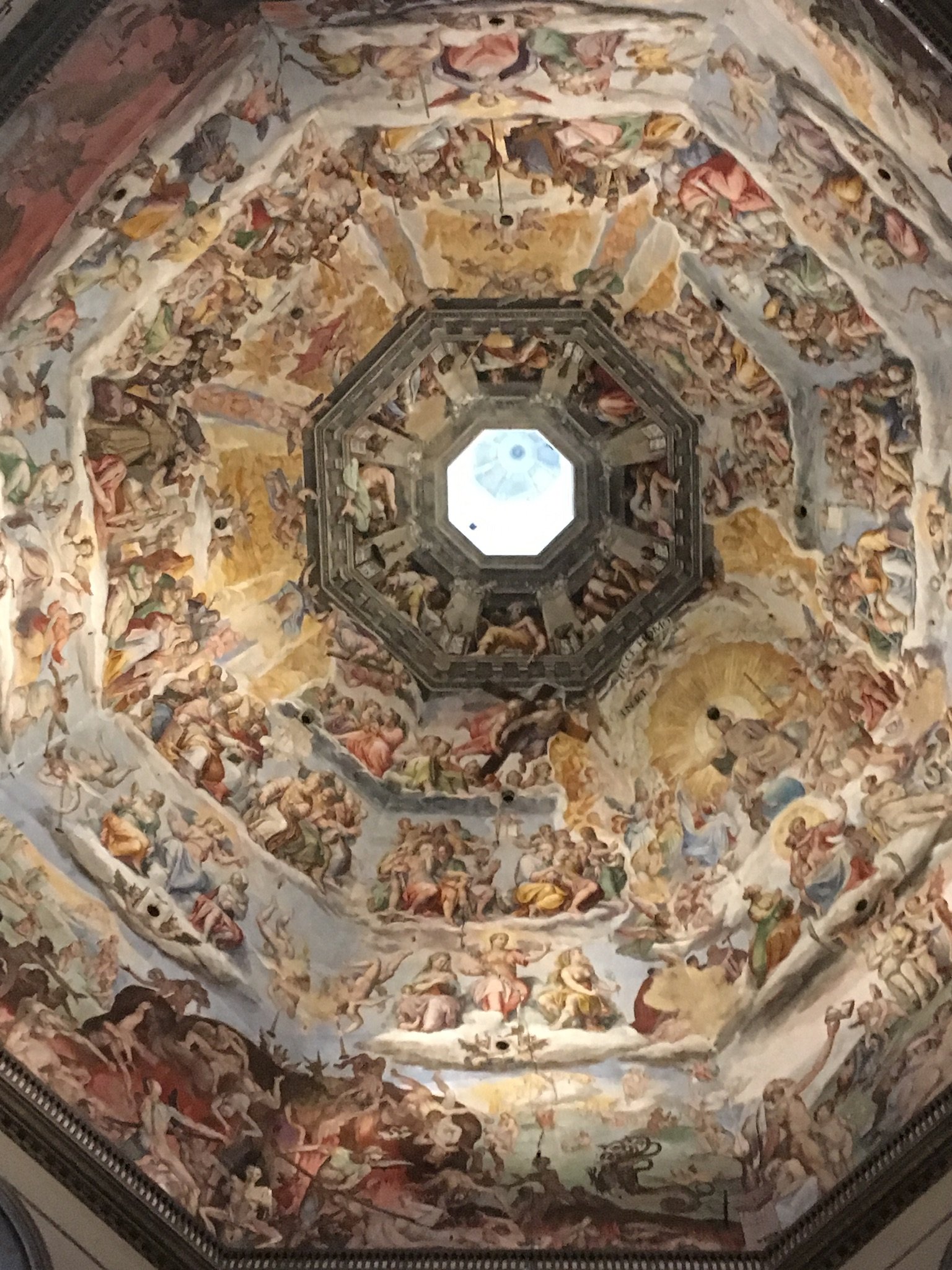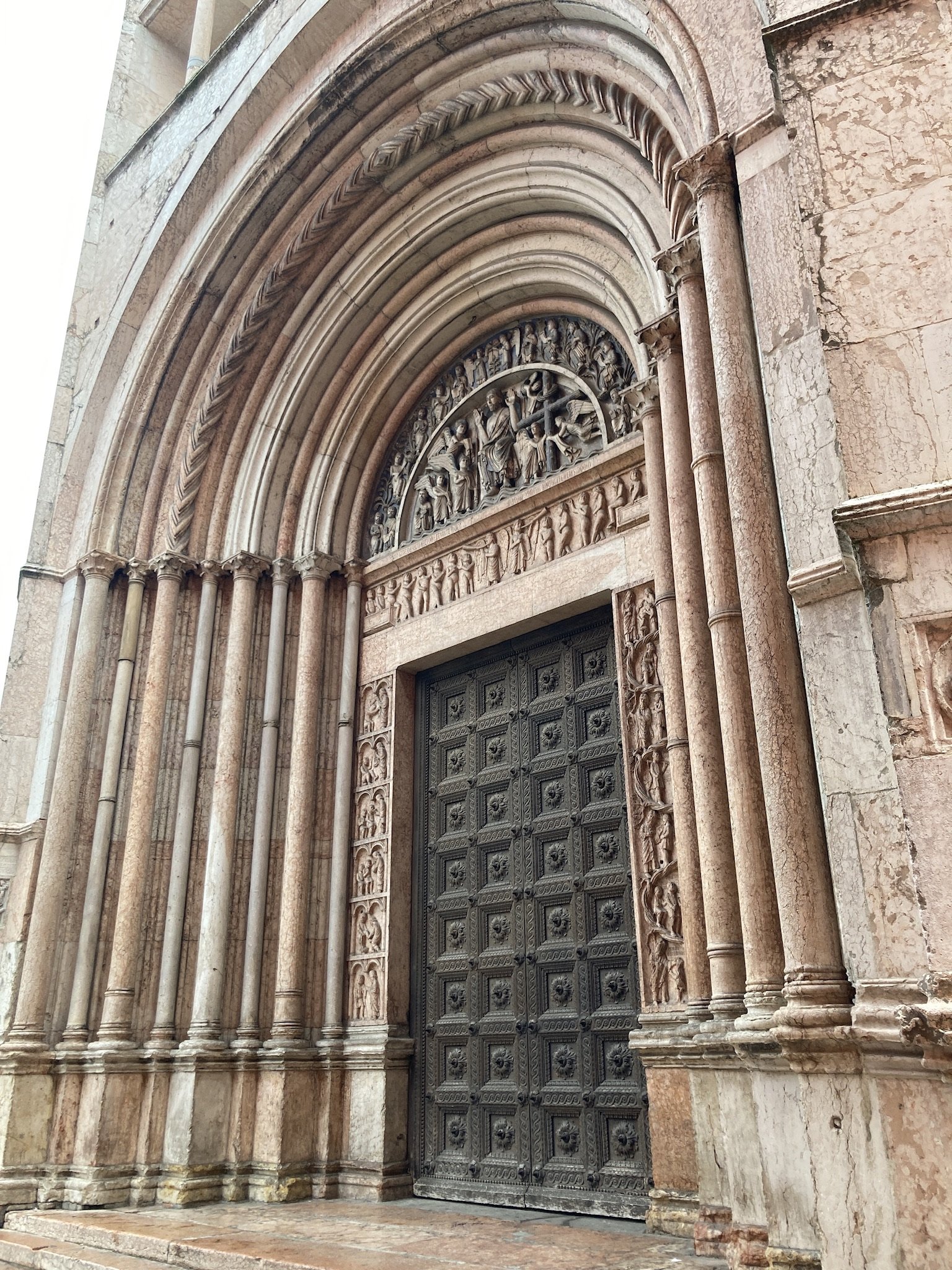Italian Baptisteries
A baptistery can be an area, often a small chapel, inside a church where the baptismal ceremony is held. It might have a simple font holding holy water, a more elaborate basin or a much larger basin for baptism by immersion.
A baptistery (battistero in Italian) may also be a completely separate building next to a church. This arrangement is quite common in Italy’s historic churches where the battistero may be just as elaborate, if not more so, then the church itself. Colorful frescoes, beautiful paintings and statues, and ornately carved baptismal basins make these wonderful places to visit. I try to seek them out whenever I head to a new Italian city.
Pisa’s baptistry lies across the Field of Miracles, opposite the Leaning Tower.
Baptistery buildings tend to have several things in common, beginning with either a round or, more symbolically, an octagonal shape. The eight sides of the octagon represent the 8th day, which in Christian theology is the day in which new life begins. Baptisteries also are most often named for San Giovanni. This is of course because San Giovanni (St. John in English) was known as San Giovanni Battista (St. John the Baptist). He performed the rite of baptism even before Christian times as a form of purification. He later became one of the 12 apostles.
Florence’s Baptistery with its beautiful marble facade.
Florence, baptistery ceiling
Some baptisteries are well-known and are on the “must-see” list for visitors to Italy, others are outside of major tourist cities and often (sadly) less visited. In Tuscany the major ones include the Baptistery in Florence and the one in Pisa. Each is unique in its own way. The Baptistery in Florence has the classic octagonal shape. The exterior is clad in white and green marble and is famous for its 3 sets of brass doors - one by Pisano and two by Ghiberti. The interior is a study in contrasts - solemn below and glorious up above.
The baptistery in Pisa, on the opposite side of the cathedral as the more famous Torre Pendente (Leaning Tower), is quite different. Round in shape, it is fairly plain on the inside. Perhaps its most notable feature is the acoustics. Step inside and sing a few notes, you’ll be amazed at the echo and the sound quality.
As wonderful as these two Tuscan baptisteries are, the one I really love is in Emilia Romagna, in the city of Parma.
Detail from a fresco, Battistero di San Giovanni, Parma
The baptistery sits beside the Cattedrale di Santa Maria Asunta, Parma’s Duomo. And while the church itself is lovely, it is the baptistry which steals the show.
Battistero di San Giovanni, Parma
The exterior is octagonal, clad in pale pink marble. Around the bottom are a series of sculptures which include a host of animals – real and mythical – plus zodiac symbols and the four virtues (Chastity. Charity, Faith, Hope). Reaching to the sky are four levels of arches loggia, then a ring of closed arches and, finally, the top with several small pinnacles. The doors are elaborate and flanked by columns of the same pink marble, carvings rest in the arches above each door.
Pink Verona Marble faces the baptistery in Parma. Note the carved animal panels.
Stepping inside is to enter a medieval world full of symbolism, religious storytelling, and powerful artistic expression. The larger of two baptismal founts, this one of pink marble, sits in the middle. . The walls are divided into 16 shallow niches, each with vibrant frescoes. Sculptures represent the seasons and months of the year.
Interior of Parma’s baptistery
Standing beneath the umbrella like ceiling is nothing short of spectacular. It is divided by 16 “ribs” which frame individual scenes. There are six bands which circle the dome, each with a different focus. There is the story of Abraham and that of John the Baptist. A bit higher is Christ, Mary and the Prophets. Higher still, the Apostles. Finally, a band of stars and the red center (the color red symbolizes love) representing heaven.
The unique ribbed ceiling in Parma’s baptistery. Each band tells a story.
There is so much to see here that a lifetime could be spent studying all the images and symbolism. My short visit provided just an introduction and, before my next visit, I will be reading more about this historic and evocative place. I’m not sure where in Italy I will travel next, but wherever I wander I hope to find another fascinating baptistery.
Masked visitors look up in wonder at the ceiling of the baptistery in Parma. (November 2021)









